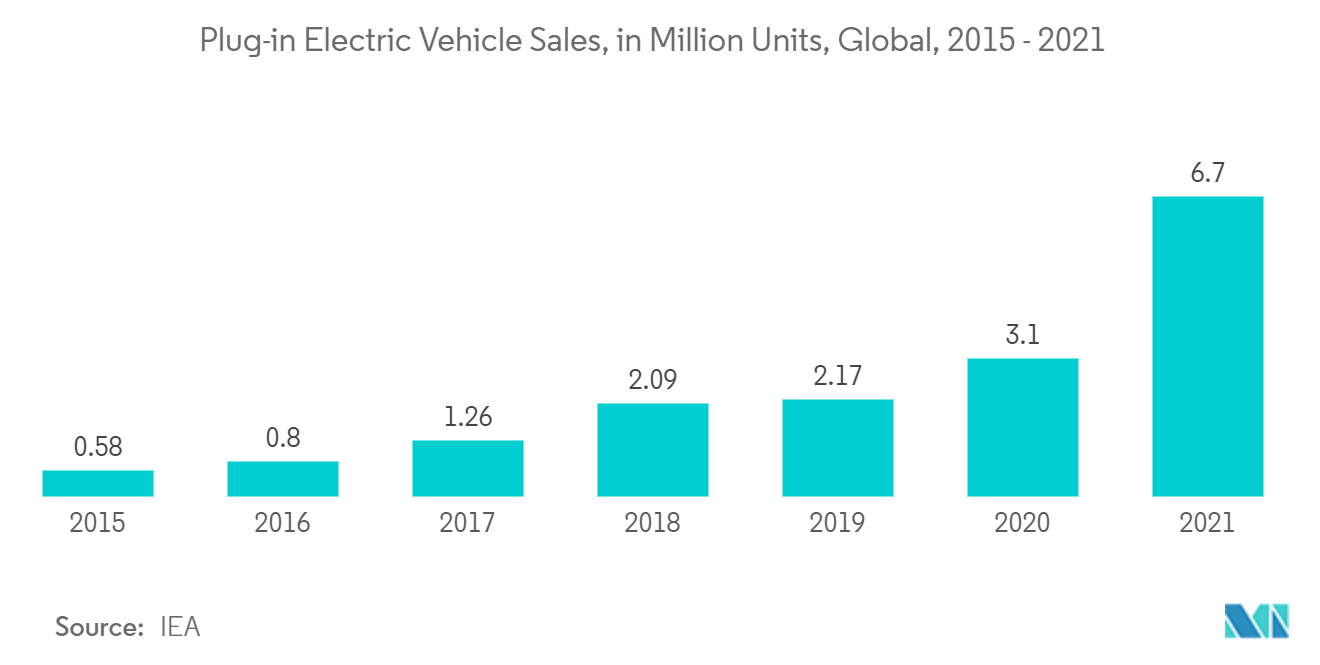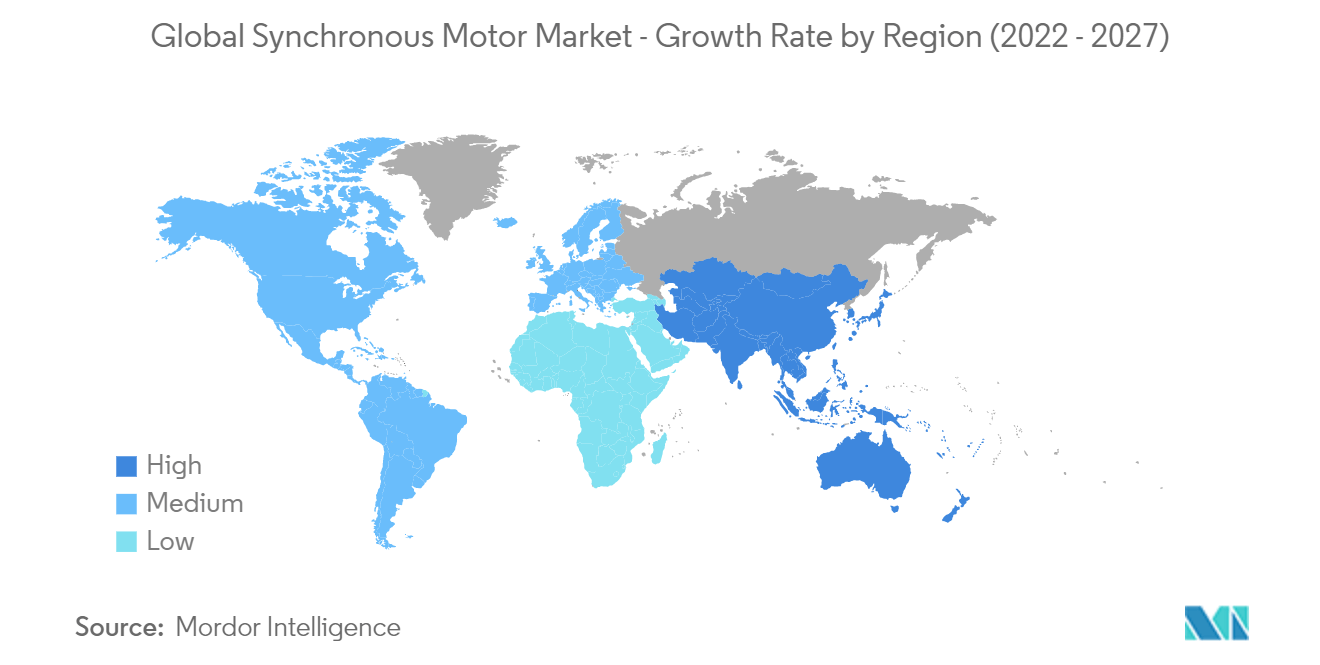Market Trends of Global Synchronous Motor Industry
This section covers the major market trends shaping the Synchronous Motor Market according to our research experts:
Rising Demand for Electric Vehicles is Expected to Drive the Market Growth
- The substantial technological advances in the modern era have opened up opportunities to develop electric motors for various end-user industries, such as automotive, oil and gas, power generation, and other industries.
- In a synchronous motor, the rotor turns at the same speed as the magnetic field. The motor provides high low-speed torque, making it ideal for urban driving. Another major advantage that a synchronous motor offers is that it can be compact and low weight.
- In Jan 2022, BMW developed a magnet-free-fifth-generation motor, which operates as a three-phase AC synchronous motor and will be used to power BMW iX m60. The motor will provide a solution that combines sensibility with high-tech EV technology to improve efficiency without using rare earth minerals.
- In Feb 2022, Quantron unveiled its new twelve-meter-long, all-electric bus, CIZARIS 12 EV. The lithium iron phosphate batteries from Quantron's partner CATL were combined with a central synchronous motor to ensure a high range of up to 370 kilometers.
- Moreover, in October 2021, Piech Automotive, a swiss electric car start-up, started testing its GT electric sports car. The car is powered by three-synchronous motors, one at the front and a tow at the rear axle, which are said to have a system output of 450 kW.

Asia-Pacific is Expected to Show a Significant Growth
- Japan has been a pioneer in transforming into an advanced industrial economy in the Asia-Pacific region. The Industrial version 4.0 is being adopted at a faster pace. The country has also emerged as a manufacturing hub for automation products and supplies them to other regional markets in the Asia-Pacific region, alongside international markets.
- Japan has been one of the major countries in the manufacturing of machinery and automotive industries. Japan's materials and manufacturing industries primarily include different fields, forest products, oil and gas, metals, and mining. The country has a large and highly advanced manufacturing industry. The manufactured products from the country enjoy a high reputation for their high quality, durability, and sophistication. The Japanese automakers, such as Toyota, Honda, and Mitsubishi, are among the biggest automakers around the globe, and Japan is the third-largest automaker.
- Various companies are adopting new technologies to boost their annual outputs. For instance, in January 2021, Northern Copper Industry Co. Ltd, a company producing raw material copper stock in North China, selected ABB for the installation of an electrical and automation system comprising the company's high voltage modular motor to optimize the production capacity of the company to garner the annual output of 5000 ton of rolled copper strip and foil production.
- In June 2021, South Korea's finance minister announced that the country plans to create a KRW 500 billion (USD 448 million) fund to support research, development, and facility investments in the next-generation vehicle sector. Automakers have been accelerating the development and production of next-generation automobiles, including autonomous and hydrogen-fuelled vehicles. The government plans to allocate KRW 282.6 billion this year to help auto parts firms to transform their business portfolios for next-generation automobiles. Such instances are expected to drive the growth of Synchronous motors over the forecasted period.


